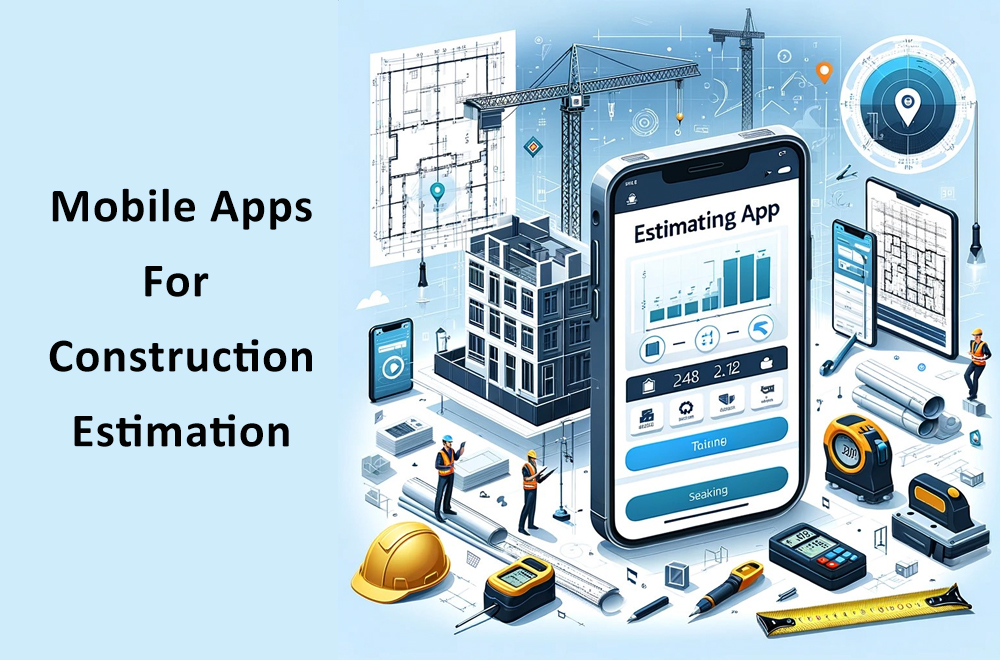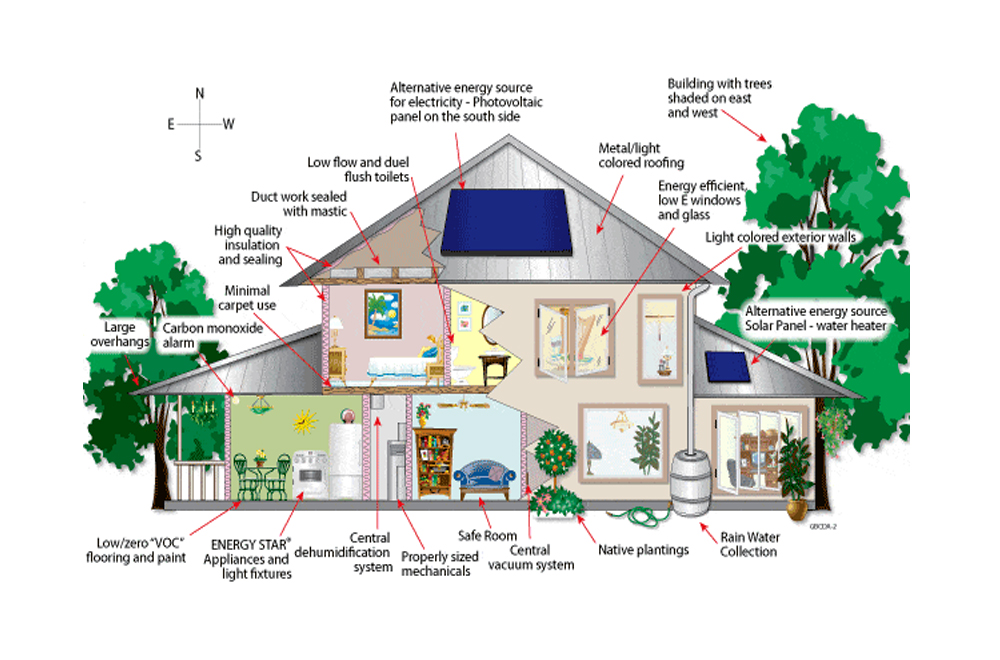There’s a common saying in real estate.
“You make your money when you buy, not when you sell.”
Believe it or not, this same concept applies to construction estimating. With real estate, the idea is that your purchase price determines your profit later. Construction is no different; your estimate sets the tone for everything that happens with your clients afterward.
Here’s the problem.
Many contractors don’t know how to estimate their construction products profitably. To do that, you’ll need to have a clear understanding of what construction estimation is.

Table of Contents
ToggleWhat is Construction Estimating?
Construction estimation is a forecast.
It’s an attempt to anticipate and plan for the expenses involved with building or updating a physical structure. A good construction estimate will account for:
- Direct costs: This includes items like materials, labor, equipment. These are the items that have a specific and immediate financial impact on construction.
- Indirect costs: These fees can include administrative, legal, security, quality, and utility costs. These are indirect expenses that don’t have a direct financial impact on a construction project.
Here’s the problem with construction estimates.
They’re all guesses.
There’s really only one way for contractors to know the true costs involved with a particular construction project. They have to finish their projects first; as it turns out, hindsight really is 20/20. That’s no way to run a business, though. If you’re going to grow your construction business, you’ll need to be able to create accurate and profitable estimates.
Construction Estimation Steps
According to Walter Scarborough, co-author of the book Building Construction: Principles, Materials, & Systems, 3rd Edition, construction estimation has eight steps.
- Commission the construction project: This is the planning phase of the project, where a structure and all of the systems involved in that structure are planned, designed, installed, tested, and verified to meet strict quality standards. Architecture firm Burns & McDonnell has a helpful guide on the commissioning process.
- Determine project requirements: This step is still in the pre-design stage — where function, location, cost, and legal requirements are identified. It’s also an appropriate time to identify compliance requirements. The project owner may also work with an architect to create a design team.
- Structural design: Architects work with project owners to create a series of designs. These designs move from high-level schematics to design development, and finally, the construction documents phases. Construction drawings provide contractors with the specifications they’ll need to build their structure.
- Contractor bidding: Contractors are invited to bid on a particular project; they receive the construction documents they need. These documents are important because they design the scope of work. You’ll need these documents to create estimates that are accurate and profitable.
- Sign the contract: The contractor with the winning bid signs a contract with the project owner. Their agreement creates a legally binding relationship between the owner and the contractor. This contract also outlines how the project will be paid, how changes to the scope are handled, and other legal details.
- Construction begins: The general contractor begins work on the structure, hiring subcontractors for specialized tasks like plumbing, electrical, or foundation work. Contractors use systems, procedures, and habits to control costs and maximize profitability.
- Project closeout: When the project is near completion, contractors ask architects to perform a “substantial completion inspection” so they can verify the contractor’s work. The contractor gives their architect a punch list that outlines any to-dos that are incomplete or need to be corrected. If the architect finds any incomplete items, he adds them to the punch list.
If you’re an experienced professional, you’re already aware of the process. The process may be a bit different for you, but this is the basic idea.
But What’s the Challanging Point
Here’s the challenge.
This process tends to be more common for commercial projects. There’s more liability and money on the line, so there’s more motivation to be precise. With residential construction projects, clients are more likely to look for design-build contractors.
These project delivery models have a major impact on your construction estimate.
Traditional delivery means your estimate is a smaller portion of the project overall, but there’s less wiggle room for your profit margin. Design-build project delivery means there’s more wiggle room to account for your profit margin, but you’re required to handle construction from A to Z.
Why is Construction Estimation So Important?
According to an in-depth job costing survey commissioned by QuickBooks and TSheets:
- 20 percent of respondents said just two or three inaccurate estimates could tank their business
- 10 percent don’t review job cost reports after a project is complete
- 20 percent agreed that estimating projects is the hardest financial process to get right
- 54 percent of businesses track project costs without software, decreasing their ability to create accurate estimates
- 29 percent stated that their profit is usually less than expected
- 60 percent felt confident about their ability to estimate project costs yet…
- 35 percent of respondents admit they only rely on their best guess—not hard data—to forecast labor costs
- Surprisingly, 43 percent of respondents using job costing software still struggle to estimate costs accurately
Are contractors as accurate as they believe?
Research shows that 9 out of 10 construction projects, regardless of size, experience a cost overrun; the average overrun was 28 percent. Only 31 percent of projects came within 10 percent of their estimated budget. What does this mean? Contractors aren’t getting the help they deserve.
Here’s the most shocking part.
Almost 42 percent of respondents say most (29.28%), some (8.56%), or no (3.75%) projects have a cost estimate. An inaccurate estimate can sink their business, but a little less than half of contractors do not give estimates the consistent attention they deserve.
You’ve ready that right. Many contractors pick and choose when to use an estimate on their projects. Some don’t use estimates at all!
Neglecting estimation is a serious mistake.
But it’s also a chance for you to win profitable projects from more clients. Here’s a list of pros and cons for good, data-driven construction estimating.
Pros
- You’re able to create accurate and profitable estimates based on data
- You set the right tone with your clients. Lowball bids become a thing of the past; you’re able to attract quality clients and quality projects consistently
- If you fail to hit your estimate, you’ll be able to identify areas where you can cut costs and improve profitability even further
- If you fail to hit your estimate, you’ll expose expense leaks (e.g., poor performing employees, lost equipment and materials, poor asset management)
Cons
- Your estimates will always be inaccurate if you can’t manage scope creep
- Clients will still expect you to produce accurate estimates (even with scope creep)
- Good estimates don’t guarantee a profit. Ideal clients with projects do
If you want your construction company to grow, you’ll need estimates to do it. With estimates, your profit is made when you price out your construction project, not when you collect payment for your project.
What does this mean?
The more accurate your estimate, the more profitable your company will be.
What You Need to Create Accurate Construction Estimates
First, you’ll need to address the types of estimates you’re creating. These estimates are broken down into three categories, design, bid, and control estimates.
- Bid estimates are negotiation tools that are used to win bids on projects. These estimates can include direct construction costs, general and subcontractor costs, and quantity considerations.
- Control estimates are used to manage costs throughout the project’s lifecycle. Control estimates are used to control the budget for financing, costs before construction, and completion cost.
- Design estimates are associated with planning and designing a project. Screening, preliminary, detailed, or engineer’s estimates are all examples of design estimates.
You’ll also need a clear idea of the direct and indirect costs I’ve mentioned earlier; both should be factored into the estimate as they both will impact your profitability. What do you need to do this consistently?
You need a roadmap.
Doina Dobre, a Senior Cost Estimator for the Emerald Group, shares her roadmap for estimating projects quickly, accurately, and profitably.
Are you overwhelmed yet?
If you’re a business owner or manager, this can be overwhelming. It’s a full-time job for project estimators and a difficult thing to manage if you’re running a small to medium-sized business.
But it’s necessary.
Why You Should Care About Your Estimates
Your estimates are levers you can use to control the profitability of your company. Find a way to decrease costs or create more accurate estimates and you put tens or hundreds of thousands of dollars in your pocket. Create accurate estimates, and you’ll identify the 20 percent of your projects that produce 80 percent of your revenue.
With good financial controls and great estimates, you can increase the amount of cash flow your company receives, on demand.
Going with your gut or ignoring estimates altogether means your company loses cash that rightfully belongs to you.
Your estimates are that important.
Note: If you’re interested, Construct Estimates can handle the headaches of construction estimation for you. We have over 10+ years of estimating experience and use up to date construction data to ensure accuracy. Our estimating team will turn around your quantity takeoff or cost estimate within 2-4 business days.
Upload your Blueprints instantly.
Construction Estimating is Your Profit Lever
Your estimate sets the tone for everything that happens with your clients afterward. Many contractors don’t know how to estimate their construction products profitably. They’re relying on their gut or intuition, rather than data, to create their estimates.
The risks are high.
An inaccurate estimate can sink their business, but roughly half of contractors do not create estimates for their projects.
There’s a better way.
With the right support and an experienced team behind your company, you’ll find your profit is made when you price your project out, not when you’re paid.
Need help with your next estimate? Upload your blueprints instantly and get a done-for-you estimate in 2 to 4 days.






